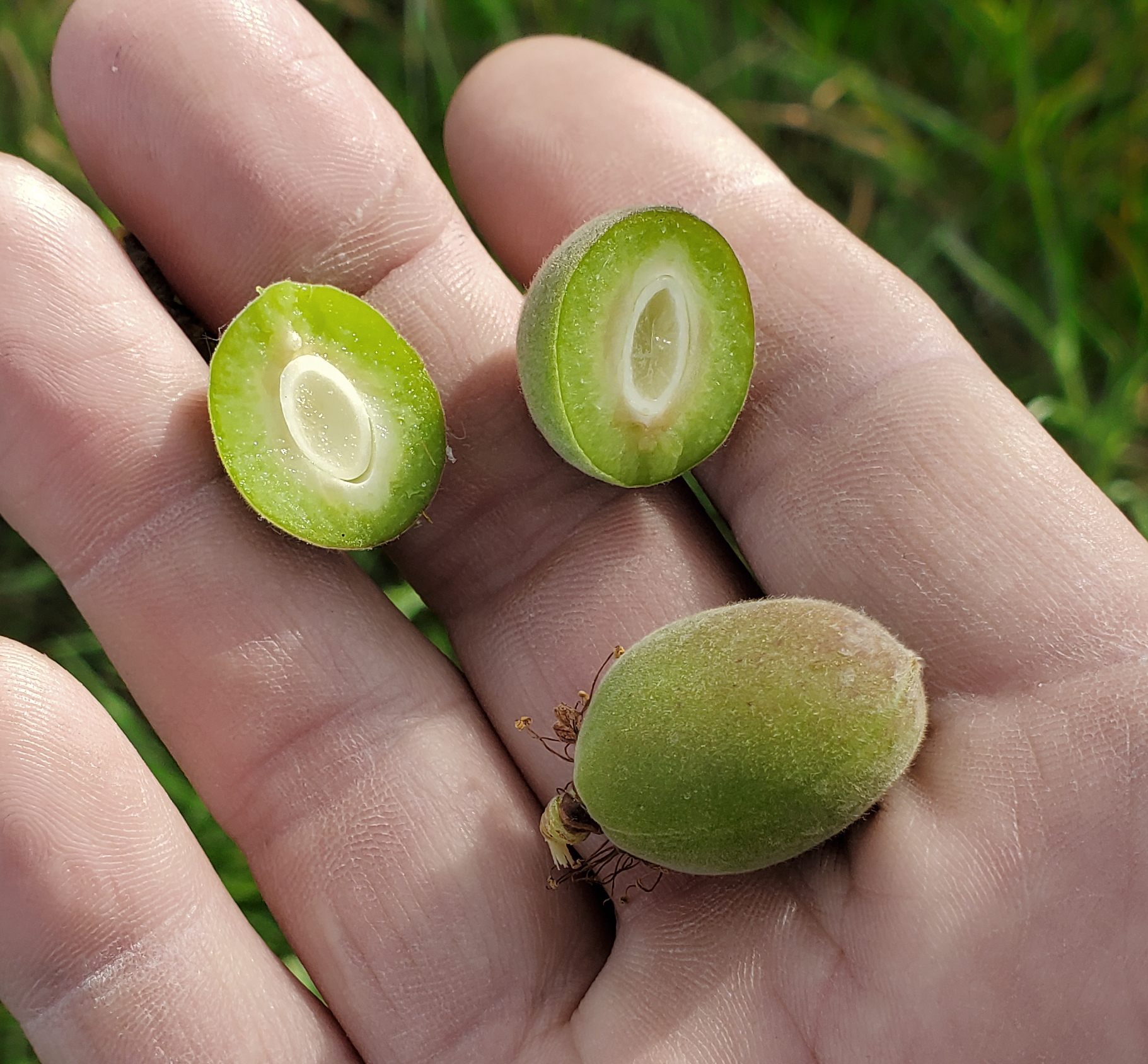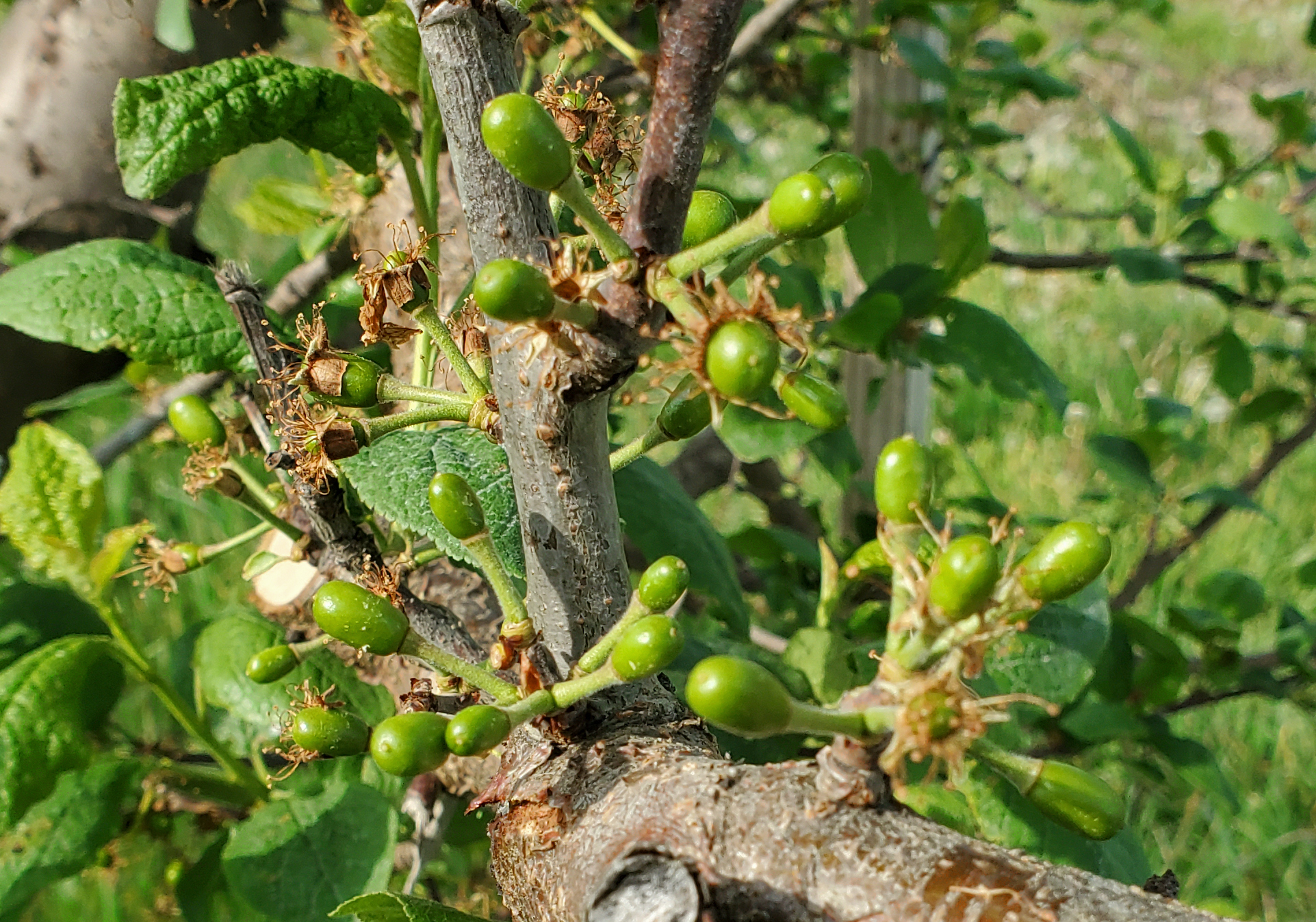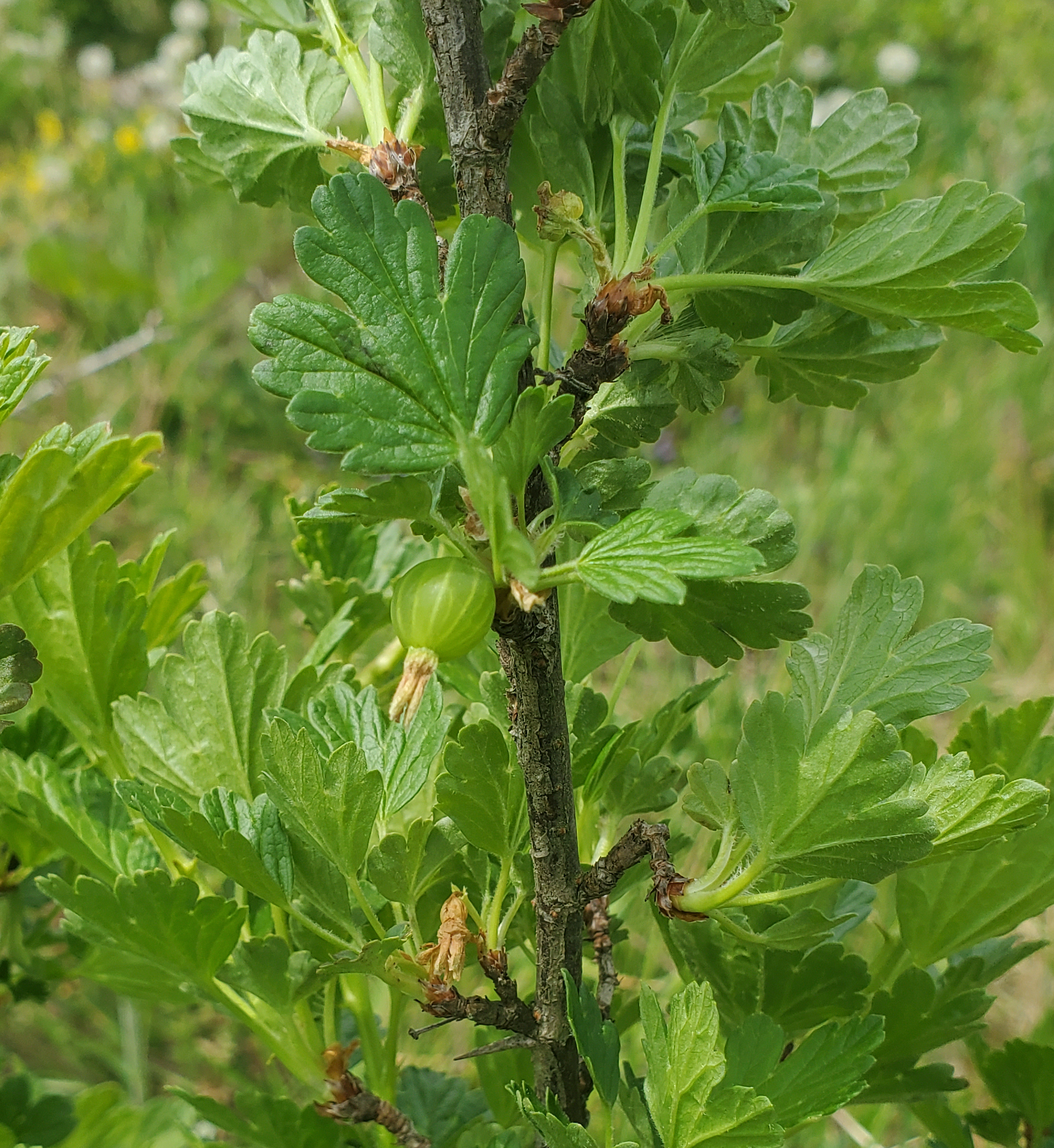Southwest Michigan fruit update – May 18, 2021
Tree fruit crops are beginning to size, making load assessments easier this week. So far, most crops survived the April freezes well.

Weather
Last week started cool. High temperatures were near 50 degrees Fahrenheit. Lows were around freezing. Daily frost warnings were widespread through Friday morning, May 14. There was some damage in the lower freeze prone areas. The weekend brought warmer weather with highs rising to the 70s. No significant rain was recorded. We are currently at around 4 inches for the year. At this time, most of lower Michigan is in a D1 level drought.
This week is expected to be unseasonably warm with highs rising from the 70s early in the week to the mid-80s by the weekend. Scattered showers on Wednesday, May 19, are expected to bring less than a quarter inch. Soils are dry. Soil temperatures are near 60 F.
With the more seasonal week, we picked up a few more growing degree days (GDD) last week: 70 GDD base 42 and 35 GDD base 50.
|
Southwest Michigan GDD summary from March 1 - May 16, 2021 | |||
|---|---|---|---|
|
Station |
GDD 42 F |
GDD 45 F |
GDD 50 F |
|
Benton Harbor (SWMREC) |
556 |
431 |
272 |
|
Lawton (Lawton) |
577 |
449 |
279 |
|
Fennville (TNRC) |
471 |
359 |
219 |
|
Average for the SW region |
558 |
434 |
272 |
|
Average last week |
489 |
379 |
237 |
Tree fruit
Stone fruits have emerged from the shuck and are starting to size up. Fruit assessments can be made to see how the crops fared through the cold, extended blooms. Rainfall since May 1 has totaled 0.2 to 0.5 inches across the region and has hindered nitrogen uptake and slowed plant growth in sandy sites.
Apricots are at 20 millimeters. The crop looks to be very good at some sites and poor at others. Plum curculio will become a concern once we start seeing warm evenings. Bacterial spot is sometimes a problem on susceptible varieties. Copper is about the only bactericide labeled for apricot, and most labels don’t support post bloom use.

Peach and nectarine have emerged from the shuck, or nearly so. They are generally at 5-8 millimeters. Crop load varies greatly from variety to variety and site to site. Bacterial spot treatments should shift away from copper to mycoshield to avoid damage to fruit. Oriental fruit moth catches are high, indicating egglaying is occurring. This first generation of oriental fruit moth target tender shoot tips of peach, and to a lesser extent, apple shoots. Tarnished plant bug and plum curculio will become a concern when fruit are a little larger. No sign of peach leaf curl symptoms yet. Last year it showed up around May 10.
In cherries, tart cherries are at 7-8 millimeters. Sweet cherries are at 10-14 millimeters. Cherry leaf spot infection periods have been infrequent lately due to relatively short wetting periods. Plum curculio feeding and egglaying in sweet cherry fruit could begin with the resumption of warm weather.
In plums, Japanese plums are at 8-10 millimeters. European plums are at 5 millimeters. Japanese plum crop prospects look OK, European plum crop looks good in some sites, poor in others. Black knot control is still ongoing until terminal growth slows. Plum curculio could be a problem later this week on Japanese plums.

Apples range from 7 to 10 millimeters diameter fruit. May 3 was a potential fire blight infection but due to cool weather symptoms can take weeks to show. Codling moths are being caught. The Enviroweather model biofix for codling moth was around May 1 for the region, but temperatures were too cold for mating flights. With the warmer weather this past weekend, Sunday or Monday should be used as biofix for most areas. Egglaying should begin late this week.
As fruit begin to increase in size, they will become a target for plum curculio. Recent apple scab infection events have been few. Scab ascospore catches are expected to be still significant for the next few weeks.
Pears are at approximately 10 millimeters diameter. Pear fruit are generally too hard to be a target for first generation codling moth. Plum curculio and tarnished plant bug can target pears at this stage. Pear psylla and scab are continued threats.
Small fruit
Grapes have 2-4 inches of shoot growth and the flower clusters are exposed. A series of radiation freezes the last 10 days caused some damage in low lying areas. In some of these areas, significant primary bud loss is visible. In the better sites damage was minimal.
Blueberry bloom continues. Apply fungicides to protect open flowers from mummy berry infection. Flowers are most susceptible to both infection and pollination soon after opening and susceptibility declines after that. Fungicide applications are focused on early bloom and mid or full bloom to protect newly opened flowers. At the end of bloom, disease control refocuses on both mummy berry infections on late bloom and anthracnose infections to young green fruit. Applications of pesticides during bloom should be done in the early morning or at night when bees are unlikely to be foraging. Bees can carry pesticides back to the hive.
Cherry fruitworm biofix should occur in the cooler areas this week. Cranberry fruitworm flight should begin soon also. Biofix for these pests is first flight or trap catch. Management begins when egglaying begins, which is one to two weeks away.
Strawberry bloom continues. There were multiple frost/freeze events this past week. Many growers used overhead irrigation to protect open bloom multiple nights in a row. In these conditions, it can be difficult to keep fungicides on the plants for protection. If sprays are needed, use systemic options and treat early in the morning for the most time for the plant to absorb the fungicide before the next watering. With bloom and bee activity, do not use insecticides.
Cool, wet conditions can favor angular leaf spot, a bacterial disease. The only effective bacterial controls are copper formulations. If flower buds are not open, consider sprays to protect against strawberry clipper and tarnished plant bug.
Bramble shoots are elongating and flower buds are visible. Scout for leaf feeding insects such as leafrollers and sawflies.
Miscellaneous crops
Currant bloom is finished. Bud drop is underway.
Gooseberries are continuing to green up. Fruits are up to 10 millimeters in size.

Hops stringing is finishing. Training is beginning this week on earlier varieties. With the dry soils, irrigation is being used to increase shoot length ahead of training.
Chestnut leaves have emerged. Shoots are beginning to lengthen on early varieties.
Hazelnuts shoots are beginning to lengthen. Early season leaf weevils create small holes in leaves this time of year. This can be an issue for young, first year plantings, but not a concern for mature trees.
Pawpaw flowers are open. Leaves are starting to emerge.
Upcoming meetings
Our regular Southwest Michigan Monday Fruit IPM Updates are available online. You need to register to receive the Zoom link and password for these meetings. The webinars are free and one pesticide applicator credit is available for each meeting. We had over 70 growers attending our Monday meetings last year.
A prebloom grape meeting is scheduled for Thursday, May 27, from 1 to 4 p.m. Register here. This meeting is good for three RUP credits.



 Print
Print Email
Email
